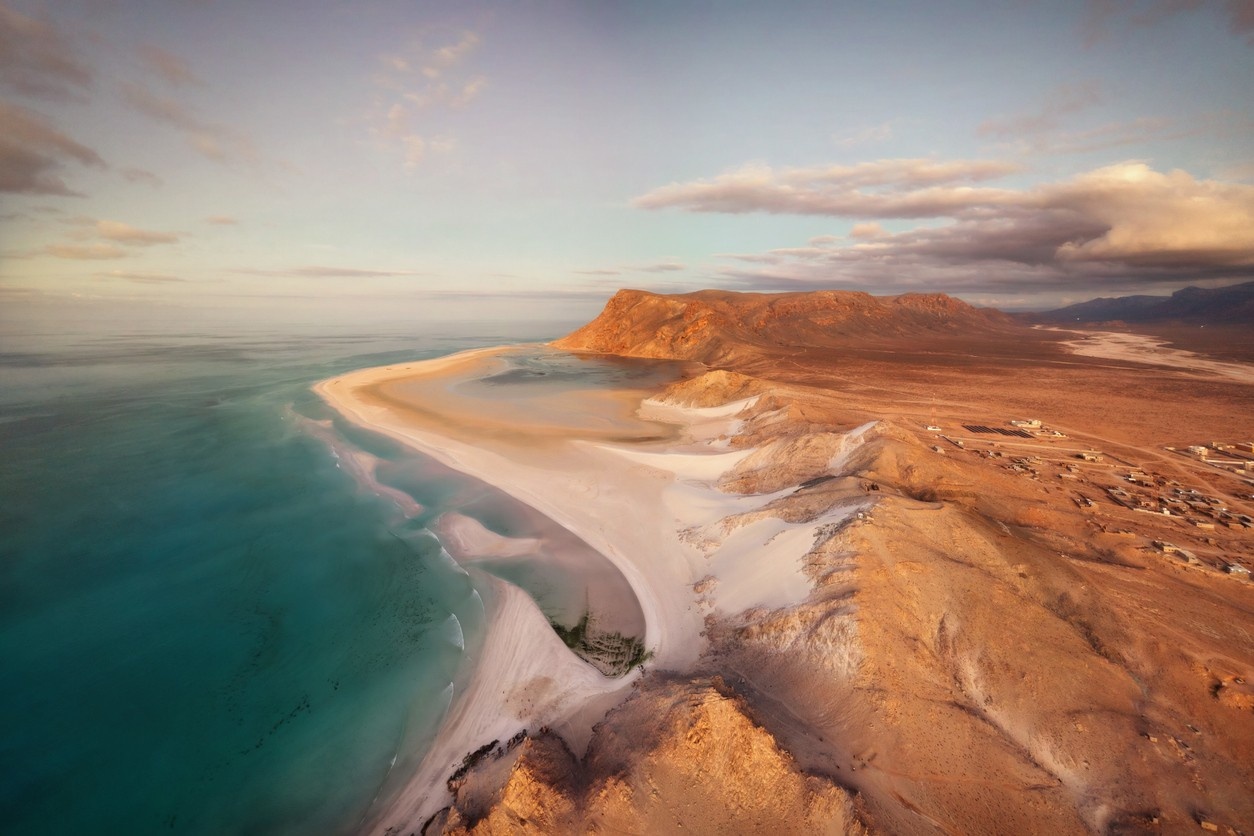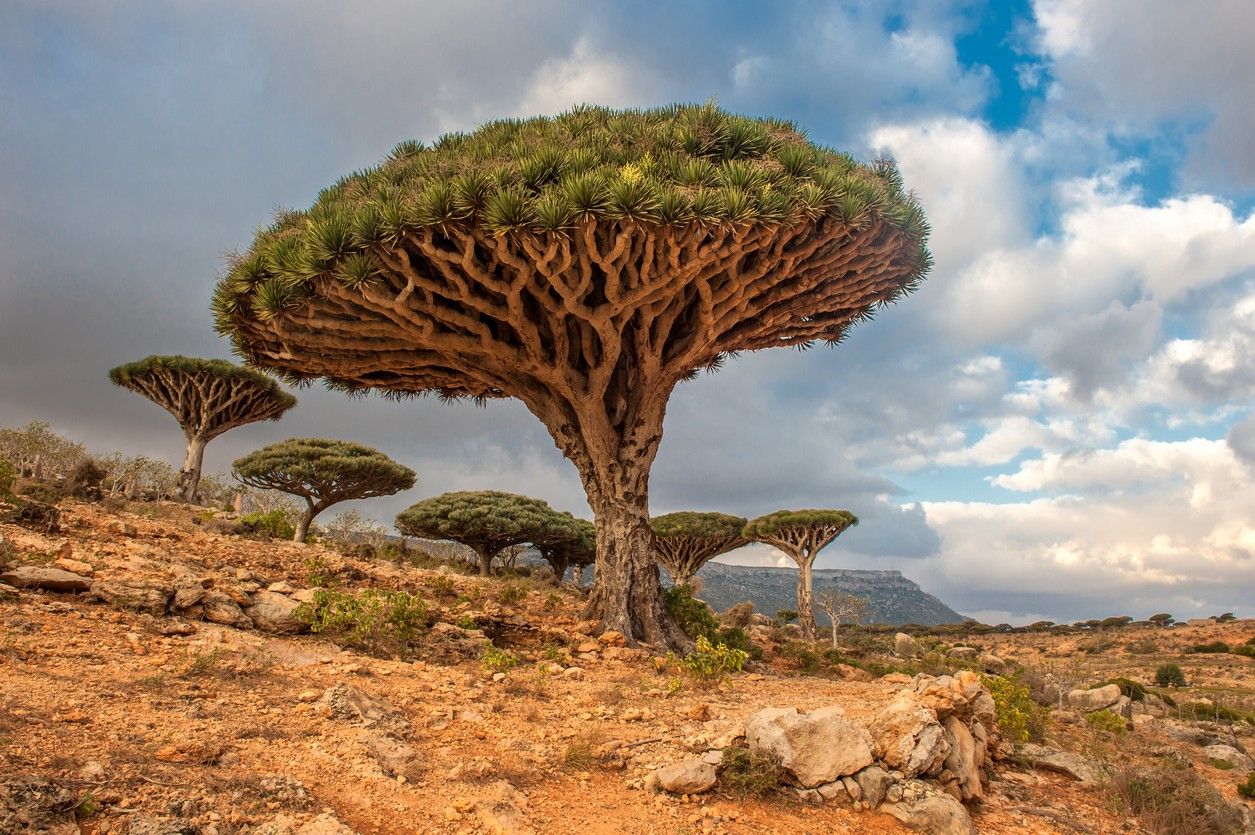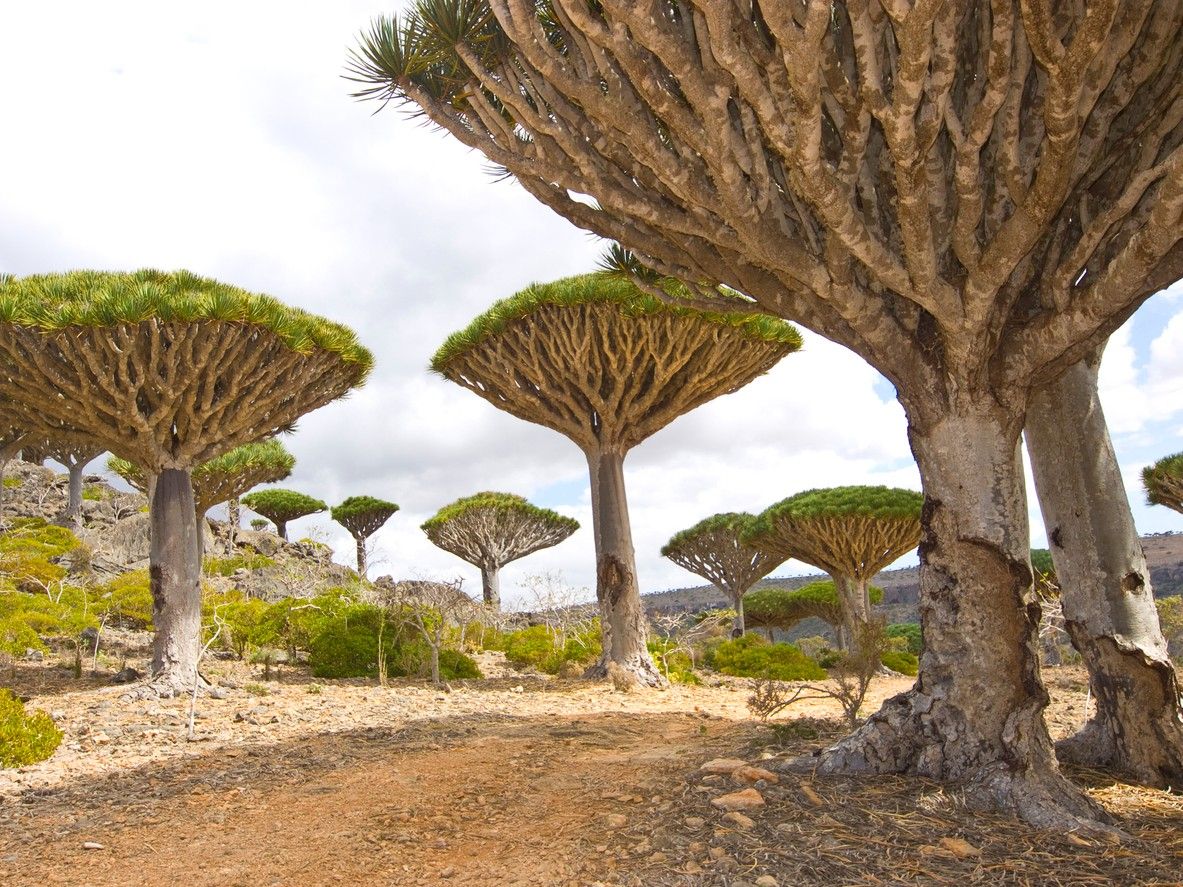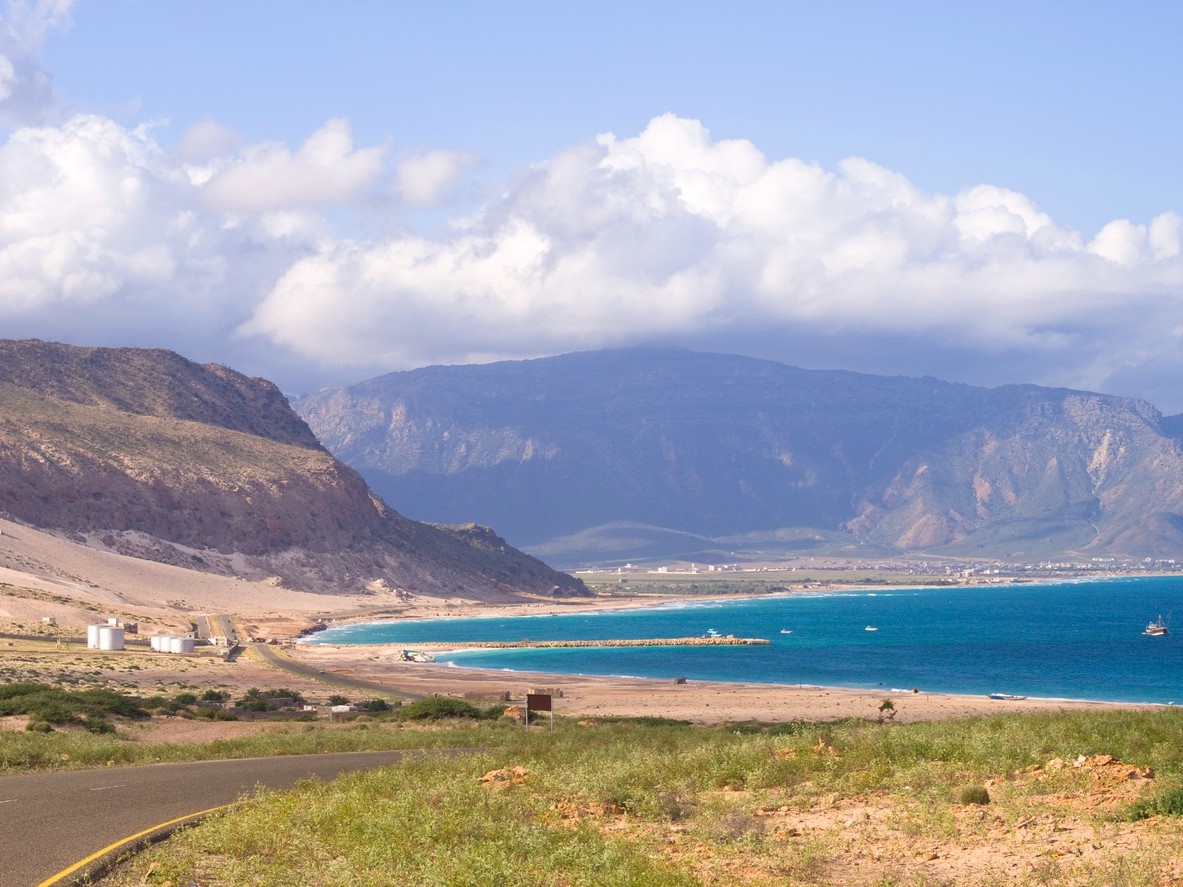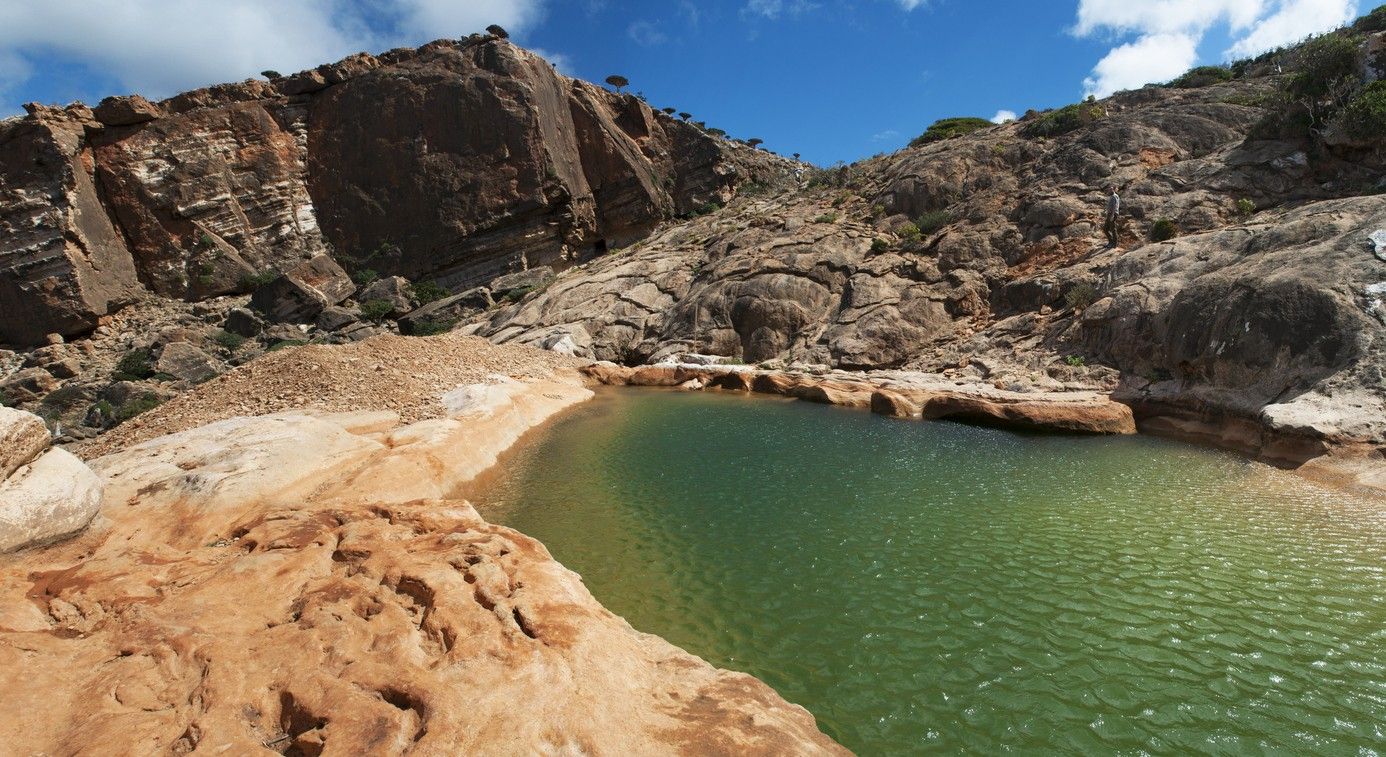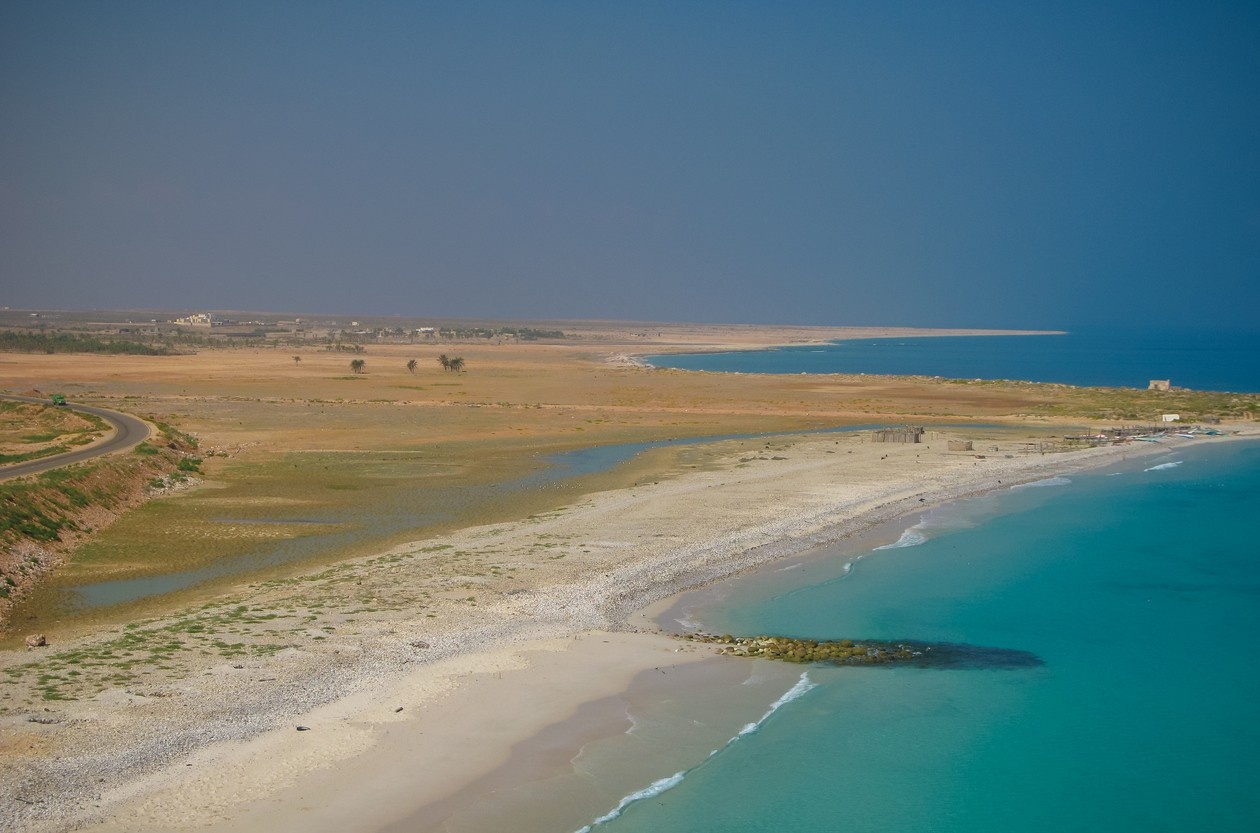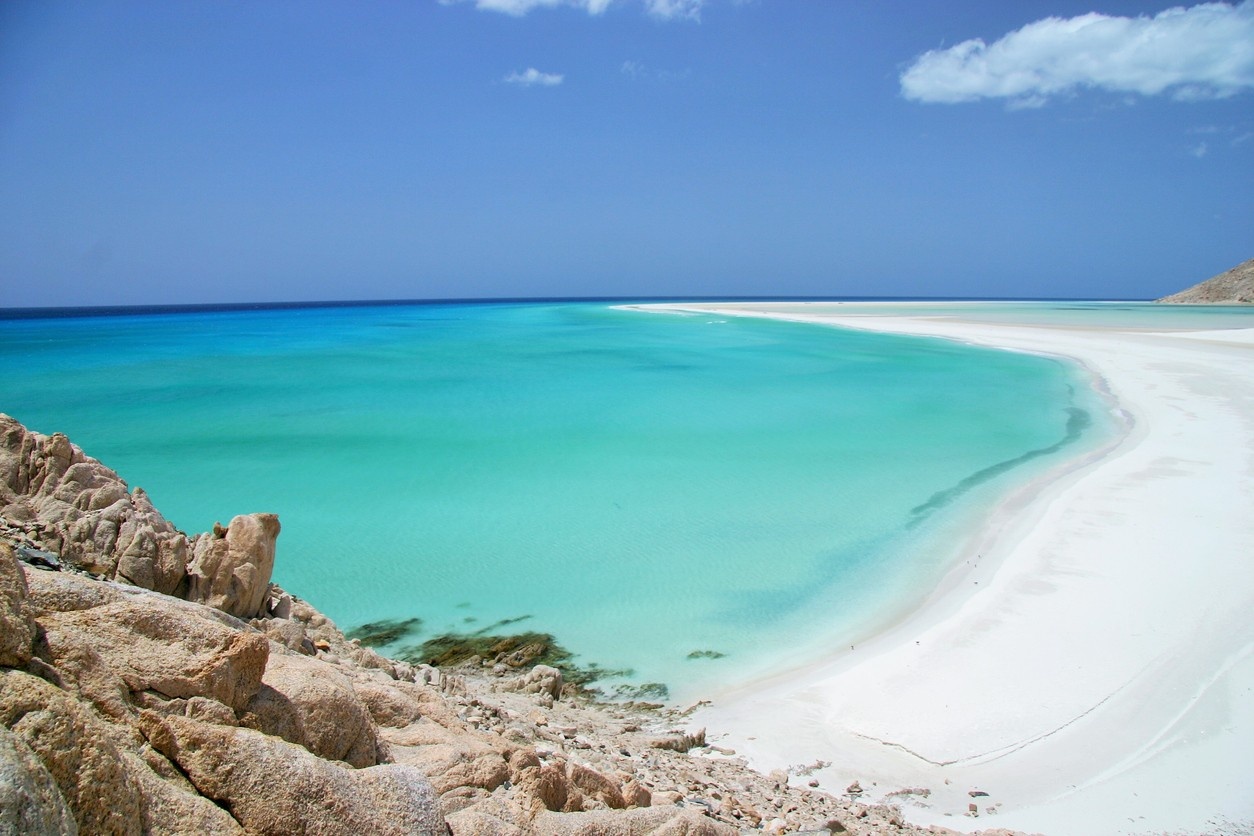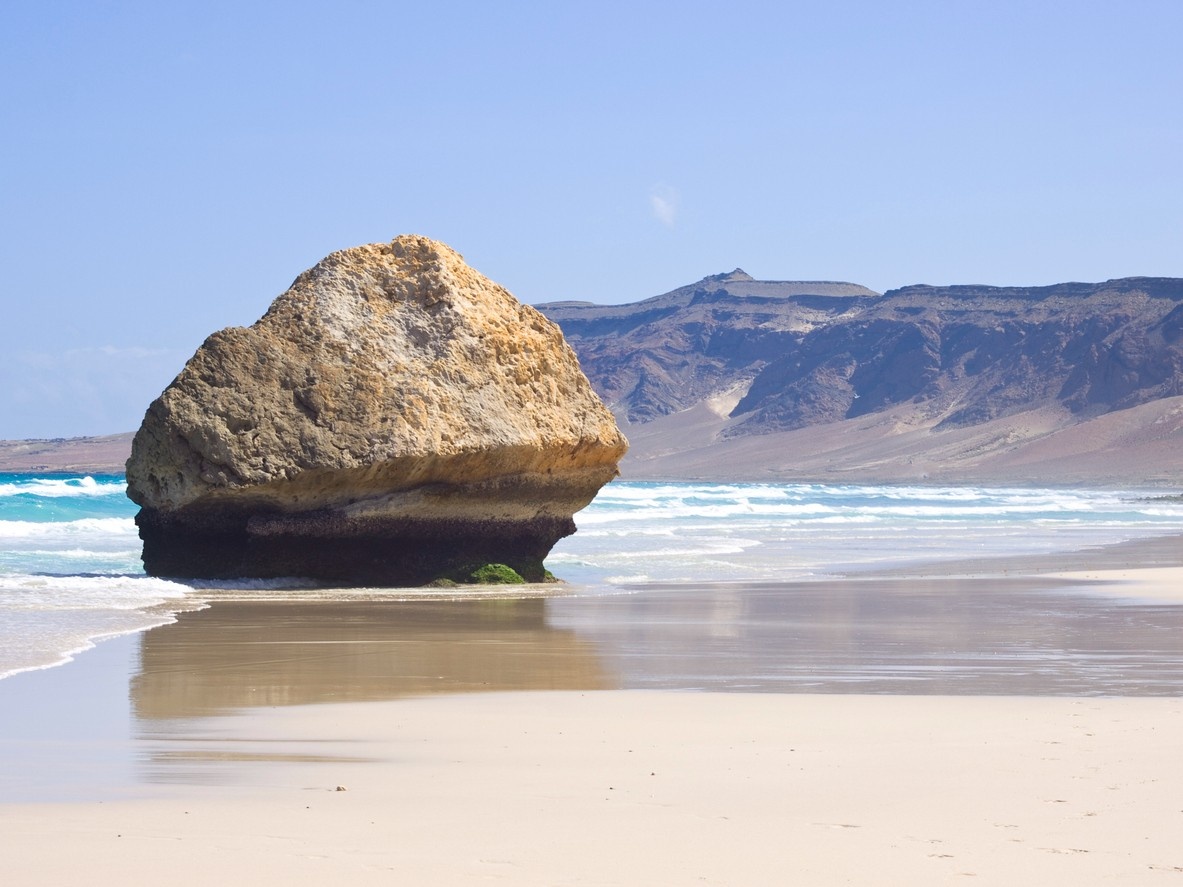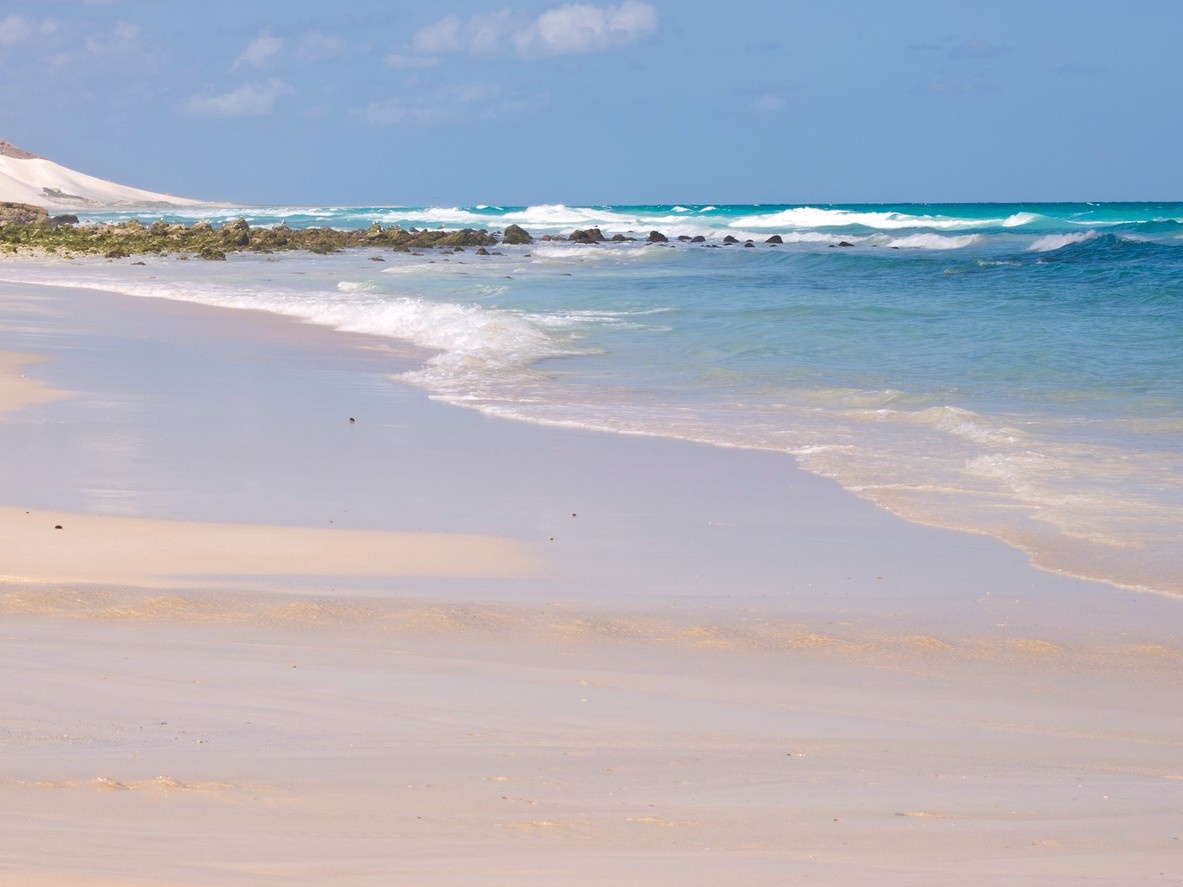Socotra Island, also known as the "island of Socotra Yemen," is a mesmerising and isolated island located in the Indian Ocean, off the coast of Yemen. This UNESCO World Heritage Site is renowned for its unparalleled biodiversity, stunning landscapes, and unique flora and fauna. The island of Socotra is a true paradise for nature enthusiasts, adventure seekers, and those looking to escape the hustle and bustle of modern life. The Socotra Island location is approximately 380 kilometres (240 miles) south of the Arabian Peninsula and 250 kilometres (155 miles) east of the Horn of Africa. This remote location has allowed the island to develop its distinct ecosystem, with an astonishing array of endemic plant and animal species found nowhere else on Earth. The island's isolation has also helped preserve its natural beauty and traditional way of life, making it a fascinating destination for travellers seeking an authentic and unspoiled experience.
One of the most iconic and recognisable features of Socotra Island is its dragon blood trees (Dracaena cinnabari). These unusual umbrella-shaped trees look strikingly and are named after their red sap, used for centuries in traditional medicine and as a dye. The island is home to several other remarkable plant species, such as the bottle tree (Adenium obesum socotranum), the cucumber tree (Dendrosicyos socotranus), and the rare Socotran pomegranate (Punica protopunica). Socotra Island animals are equally fascinating, with a high level of endemism among its wildlife. The island is home to various birds, reptiles, and mammals, many of which are found nowhere else in the world. One of the most notable inhabitants is the Socotra Island blue baboon (Papio anubis), a subspecies of the hamadryas baboon that is endemic to the island. Other unique animals include the Socotran chameleon (Chamaeleo monachus), the Socotran cisticola (Cisticola haesitatus), and the Socotran bunting (Emberiza socotrana).
The Dixam Plateau
The Dixam Plateau is a breathtaking natural wonder situated in the heart of Socotra Island. This elevated limestone plateau is characterised by its rugged terrain, deep canyons, and unique vegetation, including a significant population of the iconic dragon blood trees. These unusual umbrella-shaped trees create a surreal and otherworldly landscape, making the Dixam Plateau a must-visit destination for nature enthusiasts and adventurers alike. Dixam Plateau is home to the Diksam Canyon, a deep gorge that cuts through the plateau and offers spectacular views of the surrounding landscape. The canyon is approximately 500 meters deep and stretches for several kilometres, creating a dramatic and awe-inspiring sight. Visitors can explore the canyon via a hiking trail that winds through the rugged terrain, passing by ancient dragon blood trees and other endemic flora. The trail can be challenging at times, with steep inclines and rocky paths, but the stunning vistas and unique natural beauty make it well worth the effort.
As hikers make their way through the canyon, they will be treated to breathtaking views of the surrounding landscape, including the rugged cliffs and deep ravines that characterise the Dixam Plateau. The canyon is also home to a variety of endemic plant and animal species, including the Socotran chameleon and the Socotran cisticola, a small bird found only on the island. Another notable feature of the Dixam Plateau is the Dirhur Canyon, a narrow and deep gorge that is home to a variety of plant and animal life. The canyon is known for its crystal-clear freshwater pools, which are fed by underground springs and provide a refreshing respite from the heat of the day. Visitors can swim in these natural pools and explore the surrounding caves and rock formations, which are adorned with ancient inscriptions and petroglyphs. The Dirhur Canyon is also a popular spot for rock climbing, with its cliffs and challenging routes attracting adventurous climbers from around the world. The canyon offers a range of climbing routes, from beginner-friendly to advanced, making it accessible to climbers of all skill levels The Dixam Plateau is also an excellent spot for stargazing, as the remote location and lack of light pollution provide an unobstructed view of the night sky. Visitors can camp under the stars and marvel at the countless constellations and celestial bodies visible in the clear night sky. The plateau is also home to several endemic species of nocturnal animals, including the Socotran hedgehog and the Socotran long-eared bat, which can be spotted during nighttime expeditions.
Dixam Plateau is home to the amazing dragon blood trees (Dracaena cinnabari) that dot the landscape. These unusual trees have a striking umbrella-shaped appearance and are named after their red sap, which has been used for centuries in traditional medicine and as a dye. The trees are endemic to Socotra Island and are found nowhere else on Earth, making them a true natural wonder. The dragon blood trees are well-adapted to the harsh conditions of the Dixam Plateau, with their unique shape helping to capture moisture from the air and funnel it down to their roots. The trees can live for hundreds of years, with some specimens estimated to be over 1,000 years old. Visitors to the Dixam Plateau can walk among these ancient trees and marvel at their otherworldly appearance, taking in the striking contrast of their green leaves against the stark, rocky landscape.
Homhil Protected Area
The Homhil Protected Area is a stunning nature reserve located on the eastern side of Socotra Island, covering an area of approximately 1,000 hectares. This protected area is home to a diverse array of endemic plant and animal species, including the iconic dragon blood trees mentioned before, and the rare Socotran pomegranate, making it a true natural wonderland. One of the main attractions in the Homhil Protected Area is the Homhil Plateau, a high-altitude plateau that offers breathtaking panoramic views of the surrounding landscape. The plateau sits at an elevation of approximately 1,000 meters above sea level and is characterised by its rugged terrain, deep canyons, and lush vegetation. Visitors can access the plateau via a hiking trail that winds through the dense vegetation, passing by ancient dragon blood trees and other unique flora. The trail can be steep and challenging at times, with rocky paths and steep inclines, but the stunning vistas and natural beauty that await at the top make it a worthwhile endeavour. As hikers make their way up to the Homhil Plateau, they will be treated to breathtaking views of the surrounding landscape, including the rugged cliffs and deep ravines that characterise the area. The plateau is also home to a variety of endemic plant and animal species, including the Socotran chameleon, the Socotran starling, and the Socotran sunbird, a small, colourful bird found only on the island.
The Homhil Freshwater Spring is a natural spring that emerges from the base of a cliff and flows into a series of crystal-clear pools. The spring is surrounded by lush vegetation and is home to a variety of endemic plant and animal species, including the Socotran fig and the Socotran dragonfly. Visitors can swim in the refreshing waters of the spring and explore the surrounding area, which is dotted with ancient cave dwellings and rock art. The Homhil Protected Area is also an excellent spot for birdwatching, with several endemic and migratory species found in the reserve. Some of the notable birds include the Socotra sparrow, the Socotra starling, and the Socotra sunbird, as well as several species of birds of prey, such as the Socotra buzzard and the Socotra scops owl. Visitors can also spot a variety of reptiles, including the Socotra chameleon and the Socotra gecko, as well as several species of butterflies and moths. One of the most unique and fascinating features of the Homhil Protected Area is the Socotran pomegranate (Punica protopunica), a rare and endangered species of pomegranate found only on Socotra Island. The tree is endemic to the island and is considered a living fossil, with its closest relatives dating back to the Miocene era, over 5 million years ago. The Socotran pomegranate is a small tree or shrub that grows up to 5 meters tall and produces small, pink flowers and round, yellow fruits that are smaller than the common pomegranate. The fruits are edible and have a sweet, slightly acidic taste, and are often used in traditional medicine to treat a variety of ailments.
Visitors to the Homhil Protected Area can spot the Socotran pomegranate growing in the wild, often in rocky crevices or on cliffs. The tree is considered sacred by the local population and is often planted near homes and villages for its medicinal and cultural value. The Homhil Protected Area is one of the best places on the island to see this rare and fascinating species in its natural habitat. The Homhil Protected Area is a true natural wonderland that showcases the unique and diverse ecosystem of Socotra Island.
Qalansiyah
Qalansiyah is a charming coastal town located on the western side of Socotra Island, known for its stunning beaches, vibrant marine life, and traditional Socotri architecture. As the second-largest settlement on the island, Qalansiyah serves as a hub for tourism and commerce, offering visitors a glimpse into the unique culture and way of life of the Socotri people. One of the main draws of Qalansiyah is its pristine white sand beaches, which stretch for miles along the coast. These beaches are characterised by their crystal-clear turquoise waters, which are home to a diverse array of marine life, including colourful fish, sea turtles, and dolphins. Visitors can spend their days swimming, snorkelling, or simply relaxing on the beach, soaking up the sun and taking in the stunning views of the Indian Ocean. Qalansiyah offers some of the best snorkelling and diving opportunities on the island. The waters around the town are home to vibrant coral reefs, teeming with colourful fish and other marine life. Visitors can rent snorkelling gear or join a guided diving tour to explore these underwater wonders up close.
Qalansiyah is also known for its traditional Socotri architecture, which is characterised by its distinctive stone houses with flat roofs and ornate wooden doors. These houses are built using local materials and techniques that have been passed down for generations, and offer a fascinating glimpse into the unique culture and history of the Socotri people. Visitors can wander through the narrow alleyways and winding streets of the town, admiring the intricate details of the houses and experiencing the warm hospitality of the locals. One of the best ways to experience the local culture of Qalansiyah is by visiting the town's bustling fish market. Here, visitors can watch as local fishermen bring in their daily catch, haggling with buyers and showcasing the incredible variety of seafood that can be found in the waters around the island. Visitors can sample fresh fish, lobster, and other seafood dishes, prepared using traditional Socotri recipes and served with warm hospitality.
Qalansiyah serves as an excellent base for hiking and other outdoor activities. The town is located near several stunning natural attractions, including the Detwah Lagoon, a shallow lagoon with crystal-clear waters and vibrant coral reefs, and theDihamri Marine Protected Area, home to a variety of endemic plant and animal species. One of the most popular hiking trails in the area is the Dihamri Trail, which takes visitors through the rugged terrain of the Dihamri Marine Protected Area, passing by stunning cliffs, hidden caves, and secluded beaches. Along the way, visitors can spot a variety of endemic plant and animal species, including the Socotran chameleon, the Socotran starling, and the rare Socotran pomegranate.
Another popular attraction near Qalansiyah is the Detwah Lagoon, a stunning natural wonder located just a short drive from the town. The lagoon is characterised by its crystal-clear turquoise waters, which are separated from the Indian Ocean by a narrow strip of white sand. Visitors can spend the day swimming, snorkelling, or kayaking in the calm waters of the lagoon, or simply relaxing on the beach and taking in the stunning views of the surrounding cliffs and coastline.
Arher Beach
Arher Beach is a secluded and pristine stretch of sand located on the northern coast of Socotra Island, known for its stunning natural beauty, towering dunes, and crystal-clear waters. This hidden gem is accessible via a scenic drive through the island's interior, offering breathtaking views of the surrounding landscape and a true sense of adventure and discovery. One of the main draws of Arher Beach is its incredible dunes, which rise from the beach and offer stunning views of the surrounding coastline. These dunes are a unique and otherworldly feature of the landscape, created by the constant action of the wind and the sea over thousands of years. Visitors can climb to the top of the dunes and take in the panoramic vistas, which stretch for miles in every direction and offer a true sense of the scale and beauty of the island. At the base of the dunes, Arher Beach is a true paradise for swimming and snorkelling, with crystal-clear waters that offer excellent visibility and a diverse array of marine life. Visitors can spend their days exploring the vibrant coral reefs that lie just offshore, marvelling at the colourful fish and other sea creatures that call this area home. The beach is also a popular spot for dolphin watching, with several species of dolphins known to frequent the waters around the island.
Arher Beach is a true haven for nature lovers and birdwatchers, with a variety of endemic plant and animal species found nowhere else on Earth. Visitors can spot a variety of birds, including the Socotra sparrow, the Socotra starling, and the Socotra sunbird, as well as several species of birds of prey, such as the Socotra buzzard and the Socotra scops owl. The beach is also home to a unique ecosystem of sand-dwelling creatures, including the rare Socotran sand fox and several species of lizards and geckos. One of the most popular hiking trails in the area is the Fermhin Forest Trail, which takes visitors through the heart of the dragon blood tree forest, passing by ancient trees that are hundreds of years old and offering stunning views of the surrounding landscape. Along the way, visitors can spot a variety of endemic plant and animal species, including the Socotran chameleon, the Socotran cisticola, and the rare Socotran fig.
For those looking to experience the local culture and way of life, Arher Beach is located near several traditional Socotri villages, where visitors can learn about the unique customs and traditions of the Socotri people. These villages are characterised by their distinctive stone houses, built using traditional techniques and materials that have been passed down for generations. Visitors can wander through the narrow alleyways and winding streets of the villages, admiring the intricate details of the houses and experiencing the warm hospitality of the locals.
Detwah Lagoon
Detwah Lagoon is a stunning natural wonder located on the western coast of Socotra Island, known for its crystal-clear turquoise waters, vibrant marine life, and breathtaking natural beauty. This shallow lagoon is separated from the Indian Ocean by a narrow strip of white sand, creating a unique and otherworldly landscape that is sure to take your breath away. One of the main draws of Detwah Lagoon is its incredible snorkelling and diving opportunities. The waters of the lagoon are home to a diverse array of colourful fish, sea turtles, and other marine life, as well as vibrant coral reefs that are sure to take your breath away. Visitors can rent snorkelling gear or join a guided diving tour to explore these underwater wonders up close, marvelling at the incredible diversity of life that calls this area home.
Detwah Lagoon is surrounded by rugged cliffs and backed by a lush coastal plain, home to a variety of endemic plant and animal species found nowhere else on Earth. Visitors can hike to the top of the cliffs and take in the breathtaking views of the lagoon and the surrounding coastline, which stretch for miles in every direction and offer a true sense of the scale and beauty of the island. Detwah Lagoon is great for kayaking and stand-up paddleboarding, which allow visitors to explore the calm waters of the lagoon at their own pace. The lagoon is relatively shallow and protected from the open ocean, making it an ideal spot for beginners and experienced paddlers alike. As you glide through the crystal-clear waters, you can spot a variety of marine life swimming beneath the surface, including colourful fish, sea turtles, and even dolphins.
Skand Mountain
Skand Mountain is the highest peak on Socotra Island, reaching an impressive elevation of 1,570 meters (5,150 feet) above sea level. Located in the centre of the island, this majestic mountain offers challenging hiking opportunities for adventurous travellers, rewarding them with breathtaking panoramic views of the island's rugged landscapes and stunning coastline. The journey to the summit of Skand Mountain begins in the nearby village of Skand, where local guides can be hired to lead the way. The hike to the top is a strenuous and challenging one, with steep inclines, rocky terrain, and unpredictable weather conditions. However, for those who are up for the challenge, the rewards are truly spectacular. One of the most striking features of Skand Mountain is its unique geological formations, with towering cliffs, deep ravines, and jagged peaks creating a dramatic and otherworldly landscape. The mountain is also home to several endemic species of plants and animals, including the Socotran chameleon and the Socotran bunting, which are found nowhere else on Earth.
Skand Mountain has its role in the traditional beliefs and practices of the Socotri people. For centuries, the mountain has been considered a sacred site, with many legends and stories associated with its peaks and valleys. Some Socotri believe that the mountain is home to powerful spirits and deities, who must be appeased through offerings and rituals.
For those who are up for the challenge, hiking Skand Mountain is an unforgettable experience that offers a true sense of accomplishment and a deeper appreciation for the incredible natural beauty of Socotra Island. However, it's important to note that the hike is not for the faint of heart, and should only be attempted by experienced hikers who are in good physical condition and properly equipped for the journey.
Related Articles

Let us know you agree to cookies
We use marketing, analytical and functional cookies as well as similar technologies to give you the best experience. Third parties, including social media platforms, often place tracking cookies on our site to show you personalised adverts outside of our website.
We store your cookie preferences for two years and you can edit your preferences via ‘manage cookies’ or through the cookie policy at the bottom of every page. For more information, please see our cookie policy.
